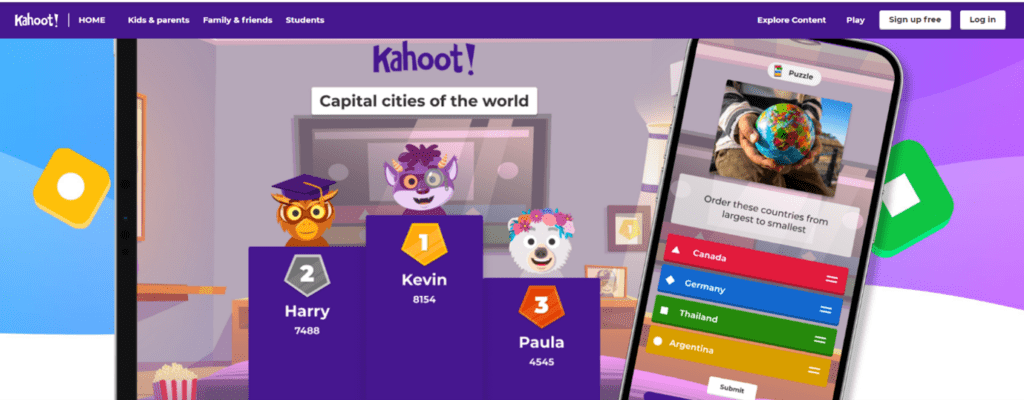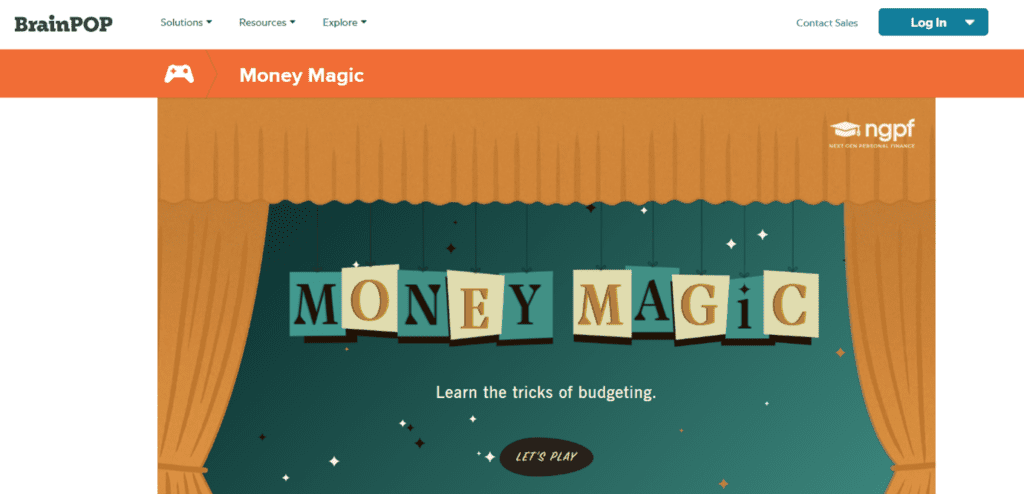Using educational videos for students has become a trend in the education industry with an increasing number of schools adopting technology-based teaching methods. Teachers are continually enhancing their skills and educating children using a vast array of educational videos for students. Video platforms enable instructors to create, share, and view educational videos made by others worldwide. This approach allows students to gain comprehensive insights into concepts from diverse perspectives.
Rise of Digital Classrooms
A digital classroom is a learning environment where technology is used to enhance the educational experience, replacing or complementing traditional teaching methods. It incorporates a variety of digital tools and resources such as interactive whiteboards, online learning platforms, educational apps, and digital textbooks. In a digital classroom, students can access lessons, assignments, and resources online, participate in virtual discussions, and collaborate on projects through digital platforms.

Pic Courtesy: indusvalleynoida.in
The rise of digital classrooms in the current educational ecosystem is driven by several factors.
The increasing availability of high-speed internet and affordable devices has made technology more accessible to students and educators.
The COVID-19 pandemic accelerated the adoption of digital classrooms as schools worldwide were forced to shift to remote learning. This shift highlighted the flexibility and adaptability of digital learning, enabling education to continue uninterrupted despite physical constraints.
Additionally, digital classrooms support personalized learning, allowing educators to tailor instruction to individual student needs and learning styles. The integration of multimedia resources and interactive tools, including educational video production for schools, also enhances student engagement and motivation. This makes learning more dynamic and effective.
As technology continues to evolve, the digital classroom is becoming an integral part of the educational landscape, offering innovative ways to teach and learn.
Effectiveness of Using Videos in Digital Classroom
Using teaching videos in the digital classroom has shown significant benefits for various types of students. The recent availability of free, high-quality effective educational videos online has become an ideal addition to blended learning environments. Parents and teachers recognize the effectiveness of using video to inspire students and use it as a teaching tool.
- Improved Classroom Engagement: Combining images, text, graphics, and audio in classroom teaching videos can enhance comprehension and retention of complex concepts. Students learn more dynamically with visual content, allowing them to maintain their attention for longer periods.
- Accommodation of Various Learning Styles: Educational videos appeal to various learning styles, engaging students’ eyes, ears, and brains. By using auditory, visual, and sometimes kinaesthetic elements, classroom videos for students cater to diverse educational needs.
- Flexibility and Accessibility: Educational videos offer flexible learning options as students can access them anytime and anywhere. Teachers can create, share, and edit videos as needed. This approach is beneficial for students with different learning speeds, allowing them to review content at their own pace and revisit videos whenever necessary.
- Scalability: Instructors can upload educational videos to social platforms like Vimeo and YouTube or partner with platforms such as Unacademy to reach students globally. These videos can be accessed in online classes, webinars, or online courses, allowing students to learn at their own pace and providing a personalized learning experience.
Applications of Video in Digital Classroom
- Lecture Recordings: Recording lectures provides a valuable resource for students. They can review the material at their own pace, catch up on missed classes, and reinforce their understanding of the subject.
In this recorded lecture video of MIT Open Course Ware, Professor Gruber delves into the course specifics, explaining the fundamentals of microeconomics and delving into the concept of supply and demand.
- Tutorials: Tutorial videos are particularly useful for teaching complex subjects or practical skills. They offer step-by-step instructions and visual demonstrations, making it easier for learners to follow along.
BYJU’S, a prominent ed-tech company in India, provides tutorial videos covering a wide range of subjects from school level to competitive exams. The platform uses engaging, step-by-step animated educational videos for students to simplify complex concepts, making it easier for learners to understand and retain information.
- Interactive Videos: Interactive videos incorporate elements like quizzes and clickable links, encouraging active participation. This interactive video learning format is ideal for keeping learners engaged and assessing their understanding in real-time.

Picture Courtesy: www.clickview.co.uk
- Virtual Classrooms: Video technology enables the creation of virtual classrooms, where students can interact with teachers and peers in a simulated environment. This approach mimics the traditional classroom experience and fosters collaboration and communication.

Picture Courtesy: leadschool.in
- Videos in Flipped Classrooms: In a flipped classroom model, educational videos for students play a crucial role by delivering instructional content outside of traditional class time.
Students watch pre-recorded lectures, tutorials, or demonstrations at home, allowing them to learn new concepts at their own pace. This method frees up classroom time for more interactive, hands-on activities such as discussions, problem-solving sessions, and collaborative projects. By engaging with the material through videos beforehand, students come to class prepared to apply their knowledge and participate more actively.
This approach enhances understanding and fosters a more student-centric learning environment. The teachers can also provide personalized support and address individual needs more effectively.
Flipped classroom learning is gradually gaining traction globally, including in India. The Indian School of Business (ISB) has been a pioneer in introducing this system to teach management courses. A new learning tool called Create Technology has been developed to support this method, providing content and tracking learner progress. This tool has already been implemented at Assam University, ISB, and the National Police Academy.
- Videos in Blended Learning: In blended learning, videos are integrated into a mix of online and face-to-face instruction, creating a flexible and dynamic learning experience.
Videos can be used to introduce new topics, supplement traditional lectures, and provide additional resources that students can access anytime. This combination allows students to benefit from the convenience of online learning while still enjoying the social and interactive aspects of in-person classes.
By using videos, educators can deliver content in diverse formats, such as animations, simulations, and interviews with experts, enriching the curriculum and catering to different learning preferences.
The integration of videos in blended learning ensures that students have multiple avenues to engage with the material, enhancing overall comprehension and retention.
National Agricultural Research and Education System (NARES) – BLP refers to an educational approach that combines traditional classroom instruction with online and digital learning methods. This platform functions as a centralized digital hub. The faculty can upload course content, which learners can access through their profiles. It provides an omni-channel learning experience, ensuring uninterrupted access across all digital devices. Faculty can continuously evaluate and refine their teaching methods, making data-driven adjustments to optimize student learning outcomes. The Blended Learning Platform centralizes all the necessary amenities for knowledge retention and increased engagement, enriching the teaching, learning, and monitoring processes across agricultural universities in India.
Its key differentiators include advanced functionalities such as built-in video conferencing and digital whiteboard for collaboration, instant messaging, eLearning, an online assessment tool, and many more.
- Videos in Gamified Learning: Videos play a crucial role in gamified learning by enhancing engagement and motivation through dynamic content integrated with game design elements like points, badges, and leaderboards.
For instance, platforms like Kahoot! and Quizizz use video-based questions to create competitive quizzes, while Classcraft incorporates narrative-driven videos for adventure-based learning modules.

Picture Courtesy: kahoot.com
Websites like BrainPOP combine animated videos with interactive games to reinforce concepts, and Duolingo uses instructional videos followed by gamified exercises for language learning.

Picture Courtesy: www.brainpop.com
By incorporating videos, educators create an immersive learning environment that caters to diverse learning styles and enhances comprehension and retention.
Incorporating effective educational videos in the digital classroom significantly enhances the learning experience by improving engagement, accommodating diverse learning styles, and offering flexible, scalable educational resources. From lecture recordings and tutorials to interactive and gamified videos, this approach transforms traditional education into dynamic, student-centric learning. As technology evolves, the adoption of video-based learning will continue to grow, providing innovative and effective teaching methods across educational institutions worldwide.









